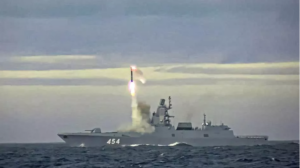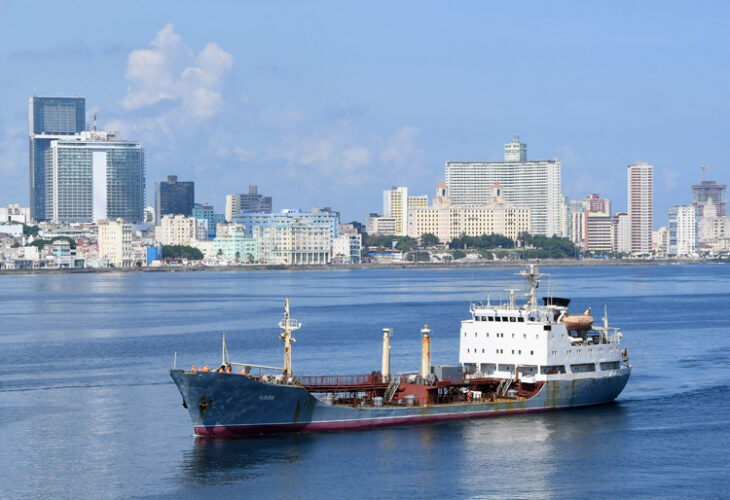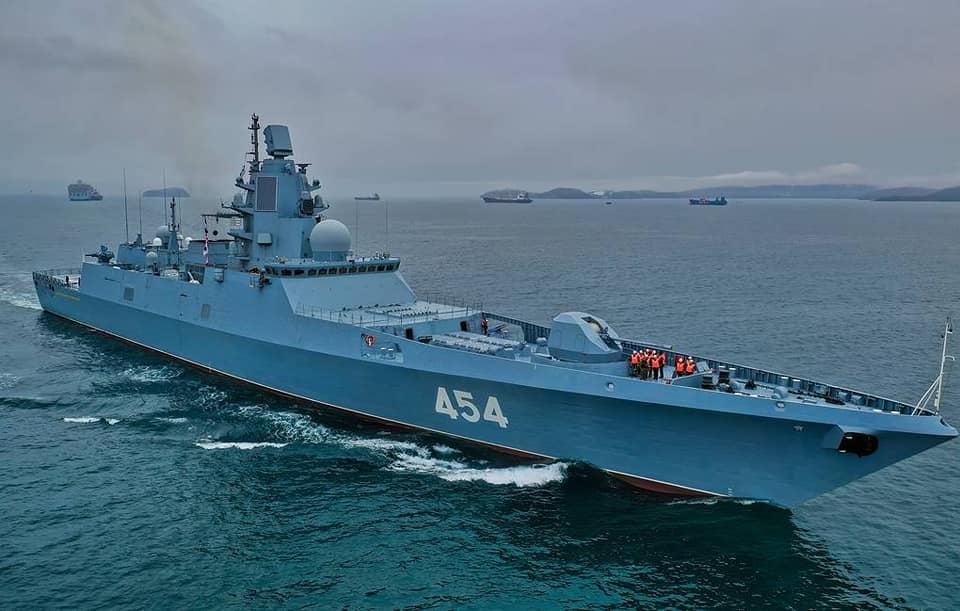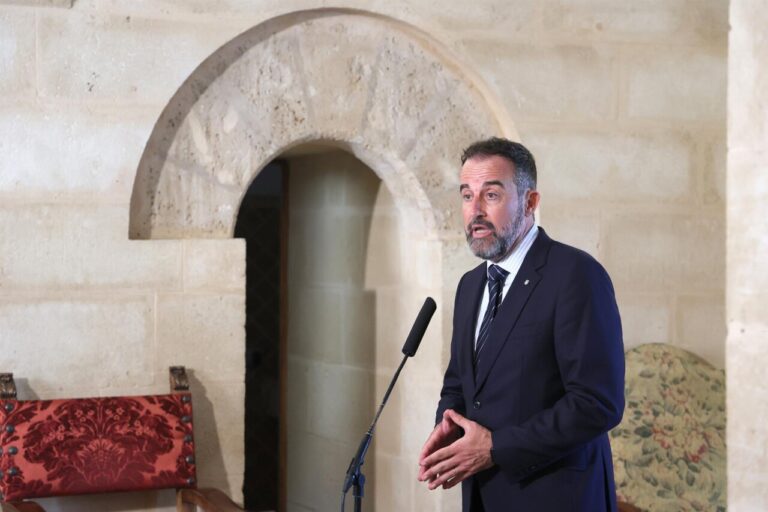The frigate Navarra has located and monitored two Russian vessels south of the Balearic Islands, during their passage through Spanish sovereign waters bound for the Atlantic, according to the Spanish Defense General Staff (EMAD) in a statement.
It was the Russian frigate Admiral Gorshkov and the resupply ship Yelnya, which were sailing from the Eastern Mediterranean in transit to Atlantic waters.

The Navarraintegrated in the Maritime Operational Command (MOM) and under the control of the Operations Command (MOPS), began tracking the Russian vessels after locating them south of the Balearic Islands. The Spanish frigate monitored them until they left the Exclusive Economic Zone (EEZ) at the maritime border with Portugal. After fulfilling its task, the frigate Navarra transferred the responsibility of monitoring to a Portuguese Navy vessel. This type of operation reinforces the surveillance and control of the waters under national sovereignty, within the framework of the usual missions assigned to the Spanish Armed Forces. According to the portal vivacampodegibraltar, the two Russian ships belong to the Northern Fleet, the main base of the Russian Navy. They crossed the waters of Ibiza in their transit from Syria to their center of operations after finishing their mission in waters close to Syria, where in this same month they have participated in maneuvers that have included the use of hypersonic missiles, the most lethal weaponry at their disposal. The return of these ships would be framed in the context of the overthrow of Al Asad, which has led the Russian Foreign Ministry to withdraw part of the diplomatic staff it had in Damascus, the Syrian capital.
Crown Jova of the Russian Navy
The Admiral Gorshkov is the first of the Gorshkov class frigates. It is an imposing warship that is armed to the teeth. The most lethal armament with which the warship is equipped is the 3M22 Zircon, a hypersonic anti-ship cruise missile that can be armed with high explosive warheads and nuclear warheads. It has a range of up to 1,000 kilometers. The firepower of the frigate intercepted by the Spanish Navy in the waters off Ibiza and Formentera does not end with the hypersonic missile. Thus, it is also equipped with long-range cruise missiles (3M14); anti-ship missiles (3M54); supersonic universal missiles (3M55 Oniks); anti-submarine rockets (91RT2 Otvet); medium and short-range missiles that configure an anti-aircraft system; torpedoes and anti-torpedoes and a 130 mm cannon. The ship measures 135 meters in length and 16.4 meters in beam. It displaces at full load 5,200 and can sail at 39.5 knots. On board, a crew of 200 people. It can accommodate a helicopter. In short, it is one of the most powerful warships in the Russian Navy and has been monitored by NATO on several occasions during its Mediterranean crossings. According to the Russian Ministry of Defense, the Zirkon hypersonic missiles can reach speeds of up to Mach 9 (nine times the speed of sound) and overcome any type of anti-aircraft or anti-missile defense. Last May 29, 2022, Russia reported that it had successfully launched its new Zircon hypersonic missile. The missile was launched from the frigate Admiral Gorshkov in the Barents Sea and reached its target some 625 miles (1,000 kilometers) away in the White Sea. It was accompanied on its voyage by an aging tanker used for offshore replenishment of the Russian fleet. The Yelna.











